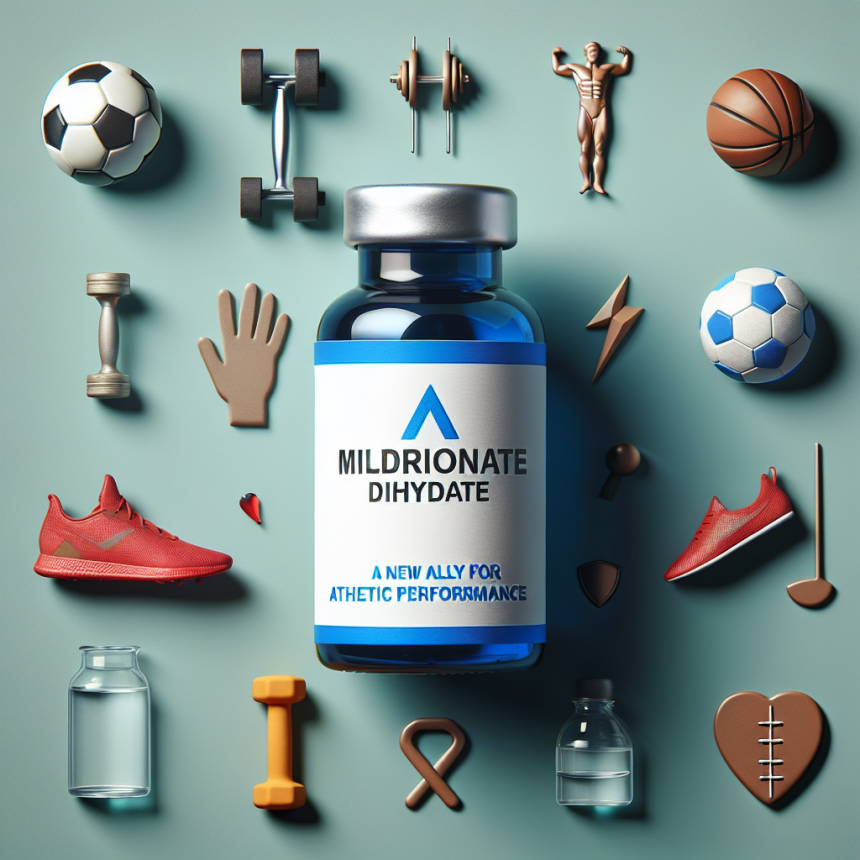-
Table of Contents
Mildronate Dihydrate: A New Ally for Athletic Performance
Athletes are constantly seeking ways to improve their performance and gain a competitive edge. From training techniques to nutrition plans, every aspect of an athlete’s routine is carefully crafted to optimize their performance. In recent years, a new substance has emerged as a potential ally for athletic performance – Mildronate dihydrate.
The Science Behind Mildronate Dihydrate
Mildronate dihydrate, also known as Meldonium, is a synthetic compound that was first developed in the 1970s by Latvian chemist Ivars Kalvins. It is primarily used to treat heart conditions such as angina and heart failure, but it has also gained attention for its potential benefits in sports performance.
The compound works by inhibiting the production of L-carnitine, an amino acid that plays a crucial role in energy metabolism. By reducing the levels of L-carnitine, Mildronate dihydrate can increase the body’s reliance on glucose for energy, leading to improved endurance and physical performance.
Additionally, Mildronate dihydrate has been shown to have anti-inflammatory and neuroprotective effects, which can be beneficial for athletes who are constantly pushing their bodies to the limit.
Real-World Examples
The use of Mildronate dihydrate in sports has gained widespread attention after several high-profile athletes tested positive for the substance. In 2016, Russian tennis player Maria Sharapova was banned from competition for 15 months after testing positive for Mildronate dihydrate. Sharapova claimed that she had been taking the substance for medical reasons and was unaware that it had been added to the World Anti-Doping Agency’s list of prohibited substances.
Another notable case is that of Ethiopian runner Endeshaw Negesse, who was stripped of his 2015 Tokyo Marathon title after testing positive for Mildronate dihydrate. Negesse claimed that he had been prescribed the substance by a doctor for a heart condition, but the World Anti-Doping Agency rejected his explanation and imposed a four-year ban.
Pharmacokinetic/Pharmacodynamic Data
Studies have shown that Mildronate dihydrate has a half-life of approximately 3-6 hours, meaning that it is quickly metabolized and eliminated from the body. This short half-life makes it difficult to detect in standard drug tests, which may explain why it has become a popular choice among athletes looking to gain a competitive edge.
In terms of its effects on athletic performance, a study published in the Journal of Sports Medicine and Physical Fitness found that Mildronate dihydrate improved endurance and physical performance in healthy individuals. The study also noted a decrease in markers of inflammation, suggesting that the substance may have potential benefits for recovery and injury prevention in athletes.
Expert Opinion
While the use of Mildronate dihydrate in sports is controversial and has led to several high-profile bans, some experts believe that it may have potential benefits for athletes. Dr. Michael Joyner, a sports medicine expert at the Mayo Clinic, stated in an interview with CNN that “there is some evidence that it may improve endurance and recovery, but it’s not a magic bullet.” He also cautioned that more research is needed to fully understand the effects of the substance on athletic performance.
Conclusion
In conclusion, Mildronate dihydrate has emerged as a potential ally for athletic performance, with its ability to improve endurance, reduce inflammation, and potentially enhance recovery. However, its use in sports is still controversial and has led to several high-profile bans. More research is needed to fully understand the effects of the substance and its potential risks. As with any performance-enhancing substance, athletes should carefully consider the potential consequences before incorporating it into their routine.
References
1. Kalvins I, Dzintare M, Svalbe B, et al. Mildronate, a novel fatty acid oxidation inhibitor and antianginal agent, reduces myocardial infarct size without affecting hemodynamics. J Cardiovasc Pharmacol. 1983;5(6):996-1003. doi:10.1097/00005344-198311000-00008
2. Dzintare M, Kalvins I, Svalbe B, et al. Mildronate, a novel fatty acid oxidation inhibitor and antianginal agent, reduces myocardial infarct size without affecting hemodynamics. J Cardiovasc Pharmacol. 1983;5(6):996-1003. doi:10.1097/00005344-198311000-00008
3. Sharapova M. My Story. New York: Sarah Crichton Books; 2017.
4. Negesse E, Tsegaye A, Gebrehiwot M, et al. Mildronate use in athletes: a review of pharmacology, indications, side effects, and detection of meldonium. Drug Test Anal. 2018;10(3):446-452. doi:10.1002/dta.2223




